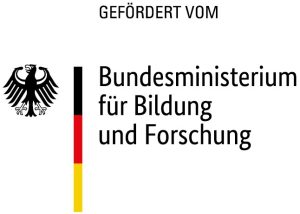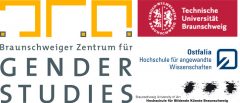
The German Research Foundation (DFG), the European Union (EU), the Excellence Initiative and other research funding agencies require applicants to take the gender dimension into account if it is relevant. In this respect, the requirement is to examine whether and how the gender and other diversity dimensions are relevant in research and to describe how this is taken into account in the project concept. But what does examining the relevance of the gender dimension mean? Within the framework of the BMBF project “The Gender Dimension in STEM Research” (IH2E), this is explained here along with providing helpful material for implementation.
Content
What is a relevance check in relation to the gender dimension? >>
Why is the gender relevance check important for TU Braunschweig? >>
When and how can a gender relevance check be carried out?
– Making funding decisions >>
– Establishing project objectives >>
– Developing methodologies >>
– Ongoing research process >>
– Documentation and dissemination >>
Who offers gender-related advice at TU Braunschweig? >>
What kind of support does the IH2E project offer for researchers? >>
What is a relevance check in relation to the gender dimension?
European Commission (2016): „The gender dimension in research“. The video provides a first general introduction to the topic and highlights the need to consider the gender dimension—here with reference to EU funding. The requirements in this regard are comparable to those of the DFG.
The gender relevance check is a systematic examination of the questions of whether and how gender is significant in terms of content and methodology in research projects. It differs from the gender equality-oriented question of who does research; for more information on the difference see here >>.
The relevance of gender in terms of content and methodology varies depending on the research context and topic, so that the gender dimension, i.e. the consideration of gender, must be determined specifically in each case. The aim is to align science and research “with the needs of all people and to take into account that the results can have different consequences for the different genders” (Geschlechteraspekte im Blick Gender Aspects in Focus, GiB) (DE).
The checklists and materials presented on this page, as well as advisory services, support people in the process of the relevance check. The BMBF project IH2E aims to gradually expand structural support at TU Braunschweig in this regard. >>
3D concrete printing: An example from TU Braunschweig
In the STEM disciplines, many research projects have no direct relation to humans or animals, such as in the development of new formulations for concrete. In these cases, the gender or other dimensions of diversity such as social origin and age do not play a role and there is no need for further relevance testing. However, as soon as humans or animals are involved as research objects or research targets, or there are potential users of the research results, the gender relevance check makes sense. For example, when it comes to human-machine interaction in the case of a concrete 3D printer and the application of manufacturing technology in the construction industry, the gender dimension must be taken into account in research. Many case studies from STEM research show that this is more often the case than commonly assumed.
The following graphic illustrates the result of the consulting discussion in the Collaborative Research Centre (SFB) Transregio 277 “Additive Manufacturing in Construction”; click here for the interactive pdf.

Three examples where the neglect of the gender dimension had serious consequences
Crashtest-Dummies must take everyone into account
The airbag systems were dangerous for pregnant women and the foetus for a long time. Crash test dummies initially considered only male, and later also female and infant standard bodies; however, pregnant women, who are particularly in need of protection, were not considered in the development of airbags until 1996. Neglecting the diversity of the users can therefore pose safety risks. Now, they are used in different body sizes and shapes to simulate protection, or the lack thereof, in the event of an accident for different bodies. (cf. Gendered Innovations – Inclusive Crash Test Dummies)

Acetylsalicylic acid does not prevent strokes and heart attacks in everyone
Aspirin was considered an effective means of preventing heart attacks and strokes for all population groups—however, for a long time only men were studied on the assumption that all human bodies function in the same way. Due to this false generalisation, neither the symptoms in women were sufficiently known nor was an appropriate medication adequately researched. Today it is known that gender differences in symptoms and medication must be taken into account (cf. Regitz-Zagrosek 2014, p. 1070).
Products must be withdrawn from sale

One of the consequences of ignoring human diversity is that between 1997 and 2000, ten active pharmaceutical ingredients were withdrawn from sale, eight of them because of greater risks for women. Londa Schiebinger cites costs for the development of an active ingredient of up to 5 billion dollars (cf. Londa Schiebinger). This means that research money is being wasted. Similar effects can arise when stereotypical assumptions, e.g. about women and men in relation to the requirements of a technology, are incorporated into product development.
Why is the gender relevance check important for TU Braunschweig?
Internationally, the examination of the relevance of the gender dimension in research projects is increasingly becoming a standard and failure to consider it can lead to non-funding. Institutions providing external funding such as the German Research Foundation (DFG) and funding programmes such as Horizon Europe demand such a relevance check insofar as it can lead to the avoidance of blind spots and thus to an increase in the quality of scientific results.
“Reflection on sex, gender and diversity (the latter also sometimes referred to as ‘intersectionality’) should therefore be part of the preparation stage for every project and, where relevant, discussed in the proposal.” (DFG: Diversity Dimensions)
“[T]he integration of the gender dimension is required by default in the research and innovation content throughout the programme, unless its non-relevance is duly justified. This integration is particularly relevant for global challenges […] where gender and/or gender differences play an important role and thus determine the societal relevance and quality of research and innovation outcomes.” (EU: Gender aspects in Horizon Europe) (DE)
Not taking the gender dimension into account can have serious consequences as the above examples >> show. It increasingly leads to applications not being approved. In order to avoid such research gaps at TU Braunschweig, to keep the level of approved third-party funding and to be a potential partner for international research collaborations, it is important to focus on the needs of all people in research and to examine the relevance of diverse lifestyles and genders.
When and how can a gender relevance check be carried out?
When is a relevance check appropriate? Repeatedly in the course of the research process. In addition to the decisive moment of project planning, it is important to consider relevance again at different points in time. The Stanford Gendered Innovations project identifies nine relevant research phases—we have picked up five.
The aids and materials for the relevance check mentioned are described in more detail here >> (DE).
Making Funding Decisions
The consideration of the gender dimension is no longer a desirable add-on but is considered part of good scientific practice. This is shown by initiatives and statements on the funding of gender research by various institutions for third-party funding (especially the European Union, the German Research Foundation). It is therefore absolutely necessary to gather information about the standards of the potential funding institutions in advance; the Research Services of TU Braunschweig offers advice in this regard.
Checklists and subject-specific information are helpful tools for the conception and application of projects; they are available from various sources, including the DFG and Gendered Innovations.
The Research Services >> provides support in the form of information on funding opportunities, but also in the application process and the search for suitable cooperation partners and contacts.
Establishing project objectives
In order to get ideas for one’s own research, the following tools and sources are particularly useful
- the tool for reflection GERD >>
- case studies from other research projects >>
- findings of gender studies, e.g. in STEM disciplines >>
- exchange with gender experts >>
In the case of user-oriented product and technology development, it makes >> sense to focus on this.
Tool for reflection GERD
The GERD model (Gender Extended Research and Development) uses a comprehensive catalogue of questions and tools to encourage differentiated reflection on the social embedding of one’s own research and offers knowledge and guidelines for teams. Using systematic starting points in the research process (impulses, project definition, analysis, concept development, realisation, evaluation, dissemination), gender and diversity aspects in engineering sciences, technology research and development can be considered and included. The original model (DE) was developed for computer science in connection with approaches from gender studies.
Case studies
GE Academy (2020): „Learn what is the gender dimension in research“. The video gives insights into the compilation of case studies from different research areas by gender research carried out in Kilden (Norway).
For various STEM disciplines, the Gendered Innovations platform (Stanford University) and the brochure “What is the gender dimension in research?” (Kilden, Norwegian centre for gender research) and the DFG for engineering and life sciences provide insight into concrete research. The encyclopaedia This is gendered provides insight into gendered objects and their problems, including technologies such as artificial intelligence, headphones and facial recognition. This helps to get to know the gender dimension already identified for one’s own field and, if necessary, to find suitable methods for researching it. A look at adjacent research fields can also trigger ideas for your own project. More materials can be found here (DE).
Findings of gender studies
On the platform “Gendering MINT digital” (gendering STEM digital, HU Berlin), Open Educational Resources (OER) provide an insight into the research and teaching area of gender & STEM. The OERs contain further literature references. The following topics are addressed on the platform:
- basic knowledge of gender studies (interdisciplinary) (DE)
- gender & biology (DE)
- gender & chemistry (DE)
- gender & computer Science (DE)
- gender & mathematics (DE)
- gender & physics (DE)
- gender in techno-scientific literacy (DE)
- equality in STEM (DE)
You can find the contents in English here.
A literature list on gender & STEM can also be found here (DE).
Exchange with gender experts
Bringing in experts from gender studies as well as the humanities, social sciences and cultural studies is another way of identifying a potential gender dimension through exchange. This can also lead to (partial) interdisciplinary and transdisciplinary research. The Braunschweig Centre for Gender Studies DE offers supports you in searching suitable gender experts.
Developing methodologies
GE Academy (2021): „Methods on how to include gender dimension in research“.
GE Academy (2021): “Methods on how to include gender dimension in research„. The video gives a first insight into practical possibilities and methods on how to include the gender dimension in research.
In terms of methods, the following aspects are considered here:
- more general tips for getting started >>
- user- and application-oriented product, technology and active substance development >>
- reflection on possible influences of the researcher on the research >>
More general tips for getting started
A questionnaire on method planning can be found in the GERD model described above under Project Definition >>.
Case studies >> can provide methodological suggestions as well as points of reference.
General and specific methodologies are further discussed on the Gendered Innovations platform (Stanford University). The general tips on integrating the gender dimension into methodological approaches are food for thought in different stages of the research process, especially the planning of projects. Here, under keywords of gender research and conceptual approaches, questions and checklists are filed that describe already existing methodological approaches or that can be used to recognise the gender dimension in one’s own research approaches and to address it specifically (e.g. through a diverse selection of human and animal individuals for data collection). Similarly, specific methods are clustered here according to research areas, e.g. for machine learning, tissue and cell research or social robotics.
User- and application-oriented product, technology and active substance development
In STEM research, it is suitable to involve future user and application groups in the research process. The aim is to develop tailor-made products and to increase acceptance and effect. Established approaches are:
- focussing on user and application groups >>
- participatory design >>
- drug research with/on humans >>
- active substance research with/on animals >>
Focussing on user and application groups
In the development of machines in engineering, the human factor usually only comes to the attention of researchers during the design process of the finished product. At the human-machine interface, the human factor becomes relevant, for example, with regard to relevant aspects such as cognition, condition and safety. For this, a wide spectrum of possible users should be taken as a basis (e.g. through the use of diverse personas in modelling). This allows different abilities as well as different demands on usability and safety to be taken into account. The associated human factors engineering certainly still leaves room for researching the gender dimension in future approaches.
Some examples:
The fact that safety-relevant aspects can have a gender dimension that is important for survival is shown by the example of the crash test dummies (case study crash test dummies).
Automatic speech recognition is becoming increasingly important in everyday life, but there are still significant differences in terms of gender as well as ethnic, national, cultural and certainly social background. For example, the rate of successful speech recognition in a study in the English-speaking world is 92% for a white man and 79% for a white woman. In addition to this gender bias, people with a migrant background and regional dialect are also recognised significantly worse. The difference in quality is due to the artificial intelligence behind it and the data on which it is based. They would have to be more diverse in order to take into account a greater variety of speakers. Good AI does not start with the algorithms, but with the data it can draw on for learning. (case study speech recognition)
Another example comes from space travel: In 2019, the planned first spacewalk of two women could not take place because no suitable spacesuit existed for one of the astronauts. As a result of this incident, the spacesuit design is being revised to take into account body temperatures and sweat patterns of different genders in addition to sizing.
(case study spacesuit)
Literature on the topic can be found here (DE).
Participatory Design
This approach offers an alternative to development processes that unintentionally incorporate stereotypes of future users of the respective products, which do not correspond to the heterogeneous requirements and realities of life of this target group. In exchange with non-researchers—especially in the case of applications the later target groups—their views, needs and demands are taken into account from the very beginning. Even for the safety of later products, e.g. in car construction, the design must take into account a whole range of diverse users. The concept is well established in the computer sciences. A selection of different approaches and publications from various computer science fields can be found here. Publications like this can also be found for interdisciplinary approaches involving computer sciences, such as design aspects of a smart city.
The GERD model >> is a comprehensive tool for reflection in the sense of participatory design that takes the different research phases into account.
Literature on the topic can be found here (DE).
Active substance research with/on humans
The selection of study participants or samples should also take into account the diversity of the later users and include a cross-section of the population, taking into account as many differences as possible. In addition to gender, other biological and social factors should be taken into account, such as age or social and professional status. These differences can have an impact on the benefits and effects. The case studies of Gendered Innovations are illuminating. Especially in pharmacy and medicine, this is relevant with regard to the effect of medicines, in order not to fail at approval after expensive development or to be withdrawn from sale afterwards—Londa Schiebinger from Gendered Innovation points this out again and again.
People of different sexes have different needs in the supply of medicines and active substances. This begins with the fact that the sexes are affected by different diseases to different degrees, continues in the differences in the effect of medicines, which are still insufficiently understood, and must be seen in the context of their own behaviour towards mood disorders and diseases as well as in the external perception by medical staff. These special circumstances also repeatedly cause research gaps, so that, for example, the population group that is less affected by a disease is given too little attention in its specific reaction to the disease, to therapies and in its needs.
A few examples:
Women consume more painkillers than men, which leads to the assumption that they are comparatively more sensitive to pain. However, the research is not as clear-cut as it is often portrayed in public; more on this in the case study on chronic pain.
One third of osteoporosis cases occur in men, yet the focus is mainly on women’s exposure to osteoporosis (see osteoporosis case study).
The “classic” case is the symptomatology of heart attack, which is clearly different in women than in men. Due to the belief that women are better protected than men against the consequences of vascular diseases by their sex hormones until the menopause, this was not recognised for a long time and the severity of the disease was often not correctly assessed, so that women with a heart attack had significantly worse chances of recovery and survival compared to men. The detailed case study on heart disease by Gendered Innovations points to the need to consider more than two genders; in this particular case against the background that trans* people are more likely to take additional hormones.
Active substance research with/on animals
The diversity dimensions in the DFG checklist also include animal research. This means that for research
(1) on or with animals,
(2) on samples taken from animals,
(3) with data relating to animals,
(4) to be used for animals or applied to them
the gender dimension must be checked and made recognisable in the proposal.
In the past, mostly male animals were used for experimental purposes. For example, when researching stress, other phenomena may emerge in other sexes that are not recorded in this way. The same may also be considered with cells taken from animals (e.g. in cell cultures). The limitation to one sex not only leads to a model with limited significance, but probably also makes it more difficult to look at the gender dimension when transferring findings from animal experiments to humans.
Also, against the background of ecological issues such as ocean warming and acidification, a differentiated view of marine organisms taking the gender dimension into account is important. It is already known that the resistance to environmental disturbances differs between females, males and hermaphrodites, but sex hardly plays a role in research, as the example of the analysis of sex in marine science shows. It is already important to design the data collection in such a way that these differences are recognisable and, even in species with multiple sexes, these are shown so that populations are fully recorded.
REFLEction on possible influences of the researcher on the research
Research runs the risk of being unconsciously shaped by one’s own preferences, (stereotypical) ideas and standards by seeing one’s own world of experience as universally valid. In this respect, one’s own ideas must be reflected upon. The learning video “Wissen ist ein Prozess” (knowledge is a process) of the project “Gendering MINT digital” (gendering STEM digital) with reference to Donna Haraway encourages reflection on one’s own production of knowledge.
The I-methodology is understood as a set of approaches that take the grouping of researchers itself into account. The aim is to reflect one-sided perspectives and to counteract the emergence of unintentional biases (such as gender bias). This is briefly explained in the brochure “Gender, Technik und Mobilität” (DE) (2015). Machines also can learn a bias if the stored data they base their decisions on are not taking into account multiple perspectives and thus produce unintended exclusions. A well-known example is algorithms, e.g. the gender bias in machine translation. It can also produce exclusions that are safety-relevant for users, as The Guardian reports. More examples of gender bias can be found here.
Literature on the topic can be found here (DE).
Ongoing research process
After the start of the project, a re-examination of the relevance of the gender dimension makes sense at the following points in the research process:
- fine-tuning and, if necessary, readjustment, e.g. based on findings from data analysis
- reaching milestones, e.g. in view of a reflection on what has been achieved or not achieved.
In the GERD model >> specific tools for reflection are provided for the implementation phase, where the diversity of the original goals and requirements can be kept in mind even when working with not fully developed prototypes and in case of technical difficulties during implementation. Evaluation tools at various times of the ongoing research and development process are also provided to check whether a project is on the right track and whether possible gender and diversity aspects have been successfully incorporated.
For the relevance check in this phase, the instruments already mentioned, checklists >> as well as case studies, findings from gender studies and obtaining expertise >> are also suitable.
Documentation and dissemination
The diversity of future users must also be taken into account in documentation and dissemination. The GERD model >> provides specific guidance for this phase.
Who offers gender-related advice at TU Braunschweig?
Gender Consulting: Juliette Wedl >> from the Braunschweig Centre for Gender Studies advises on questions concerning the content and methodological consideration of the gender dimension in research projects, as described below: j.wedl@tu-braunschweig.de.
Equality & Diversity Consulting: Ulrike Wrobel, Equal Opportunity Officer and Head of the Equal Opportunity Office at TU Braunschweig advises on the integration of equality and diversity aspects in research projects >>: u.wrobel@tu-braunschweig.de.
On the causes, effectiveness of existing measures and recommendations for action in STEM disciplines, an expert opinion from the Third Gender Equality Report of the German Federal Government (2021) can be found here (DE).
Research Services: The Research Services, including the European Office, offers information and advice on all questions of national, international and European funding; find the right contact person for your request >>.
What kind of support does the IH2E project offer for researchers?
Feel free to contact Juliette Wedl and arrange a meeting if you have a research idea or project related to STEM disciplines.
We offer:
- consulting on the gender relevance check (gender consulting) >>
- information on the BMBF project “The Gender Dimension in STEM Disciplines” (IH2E)
- advice on how the IH2E project can be helpful for you
- the development of formats for mutual cooperation (dialogue formats >> )
- opportunities for participation in concept development >>
- participation in the development of ideas for gender relevance check and the design of the InovationHub >>
We look forward to working with you.

IH2E is a project of TU Braunschweig. Funding was raised in cooperation with the Braunschweig Centre for Gender Studies.


